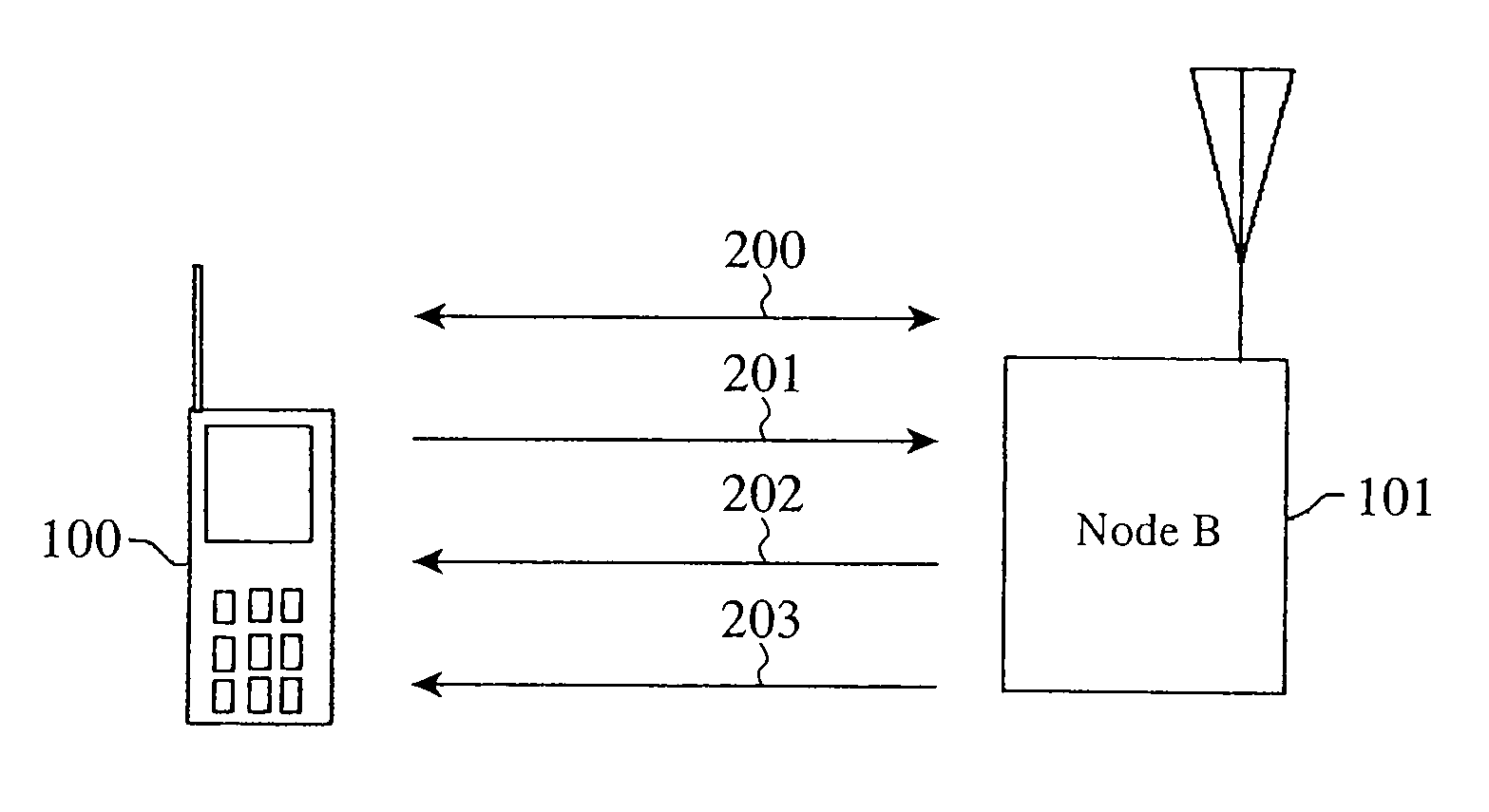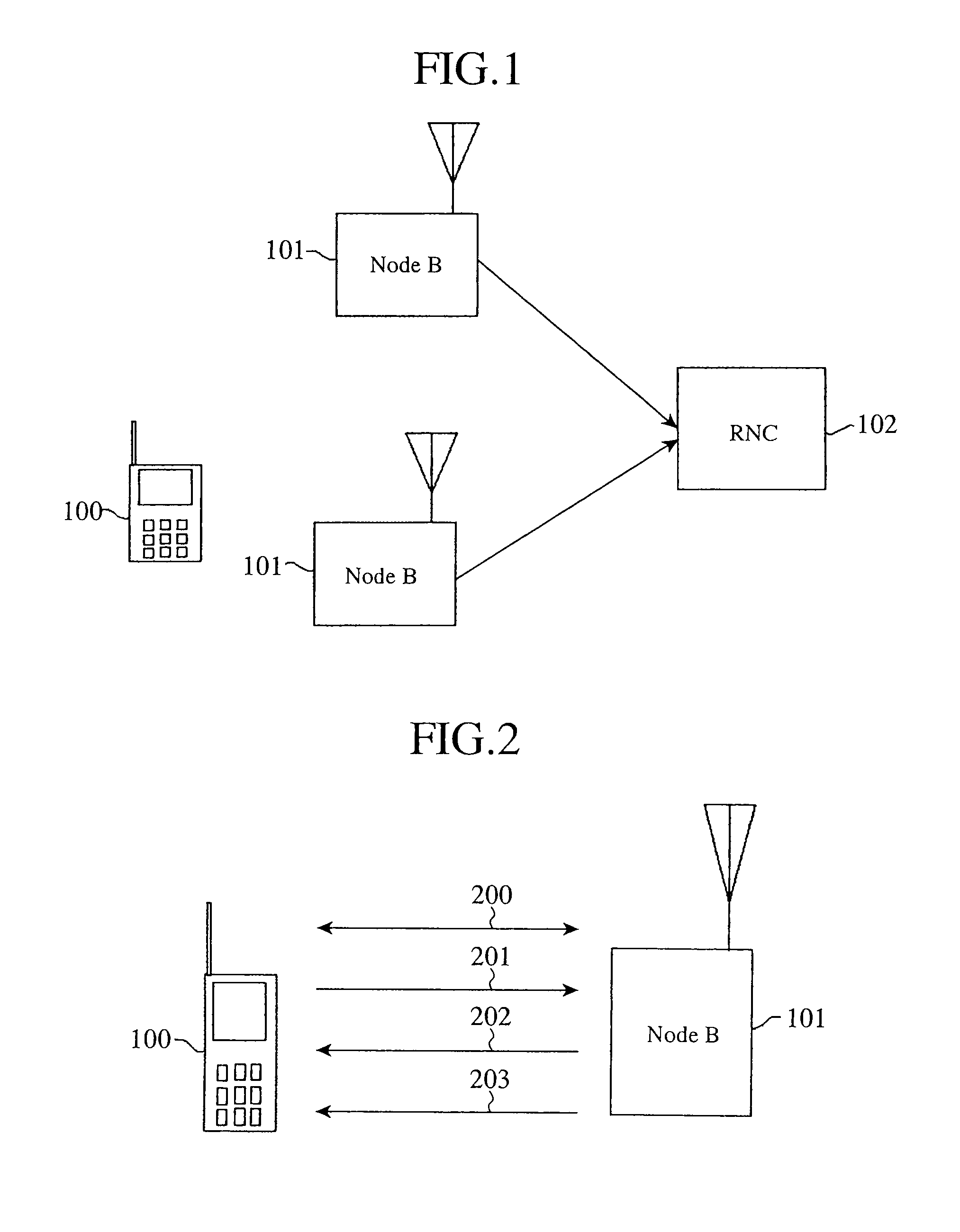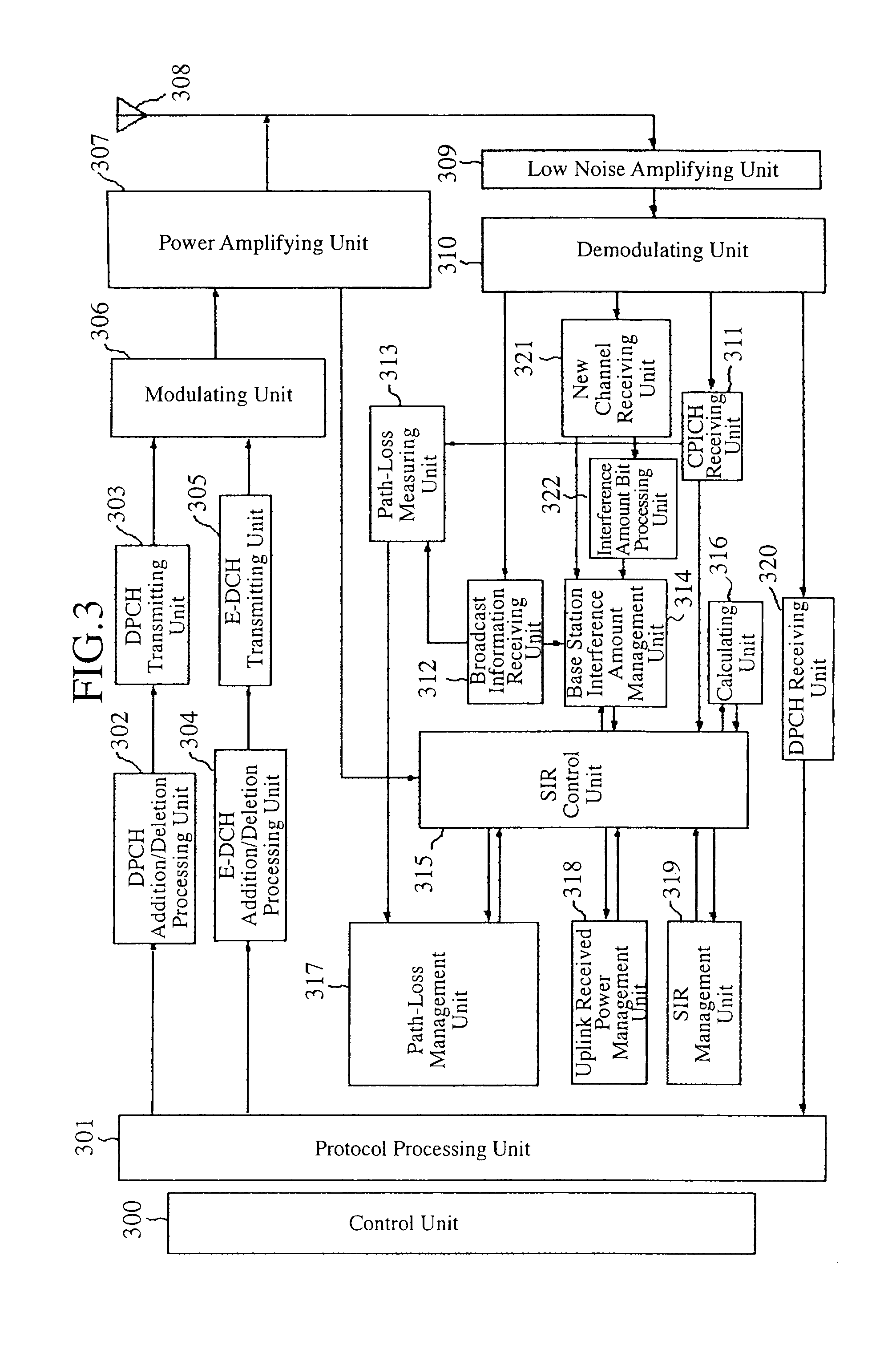Communication quality judgment method, mobile station, base station, and communications system
a technology of communication quality and mobile stations, applied in the field of communication quality judgment methods, mobile stations, base stations, communications systems, to achieve the effect of good uplink communication quality
- Summary
- Abstract
- Description
- Claims
- Application Information
AI Technical Summary
Benefits of technology
Problems solved by technology
Method used
Image
Examples
embodiment 1
[0058]FIG. 1 is an explanatory diagram showing the structure of a mobile communications system. In FIG. 1, a mobile station (UE: User Equipment) 100 is a moving communications device which the user uses, such as a mobile phone, a Personal Digital Assistant (PDA: Personal Digital Assistant), or a car telephone. The mobile station 100 transmits and receives data to and from a base station 101 via a radio channel. Each base station 101 controls the transmit power of a mobile station, carries out scheduling etc., and carries out a process of allocating a radio resource to the mobile station. A base station control apparatus (RNC: Radio Network Controller) 102 manages two or more base stations (Node Bs) 101, and relays transmission data from a core network (Core Network) not shown in the figure and transmission data from a mobile station. The combination of base stations 101 and the base station control apparatus 102 may be referred to as a UTRAN (Universal Terrestrial Random Access Netw...
embodiment 2
[0075]In accordance with embodiment 1, each base station broadcasts the amount I of interference to the mobile station using the BCH. As an alternative, each base station can broadcast the amount I of interference to the mobile station using a channel other than the BCH. Hereafter, an example in which each base station notifies the amount of interference using a channel other than the BCH will be explained. Concretely, an AG (Absolute Grant), an RG (Relative Grant), an over load, or the like can be provided as information associated with the amount of interference. Grant is notification of grant which is provided from a scheduler to the mobile station. The AG is a channel signal showing an absolute rate at which a plurality of bits are transmitted every 10 ms, and is piggybacked onto an E-AGCH (E-DCH Absolute Grant Channel). The RG is a channel signal in which one bit is transmitted every 2 ms or 10 ms in order to move a point relatively from the absolute value notified via the AG. ...
embodiment 3
[0078]An example of using an RG in order to notify the amount of interference from a base station to a mobile station will be explained hereafter. Also in the case of using an RG, an individual ID is set o each mobile station as in the case of using an AG. Furthermore, a group ID can also be used even in the case of using an RG. In the case of using an RG, orthogonal codes which are called Hadamard codes are used without using CRC in order to distinguish IDs from one another, unlike as in the case of using an AG. Because there is no CRC bit in an RG and IDs are distinguished from one another with Hadamard codes, it is difficult for each mobile station to judge whether an RG has been sent thereto compared with the case of using an AG. For this reason, it is desirable that RGs are always sent to mobile stations. FIG. 14 is a flow chart for explaining a process which is performed by a mobile station when the amount of interference is broadcasted thereto from a base station using an RG....
PUM
 Login to View More
Login to View More Abstract
Description
Claims
Application Information
 Login to View More
Login to View More - R&D
- Intellectual Property
- Life Sciences
- Materials
- Tech Scout
- Unparalleled Data Quality
- Higher Quality Content
- 60% Fewer Hallucinations
Browse by: Latest US Patents, China's latest patents, Technical Efficacy Thesaurus, Application Domain, Technology Topic, Popular Technical Reports.
© 2025 PatSnap. All rights reserved.Legal|Privacy policy|Modern Slavery Act Transparency Statement|Sitemap|About US| Contact US: help@patsnap.com



